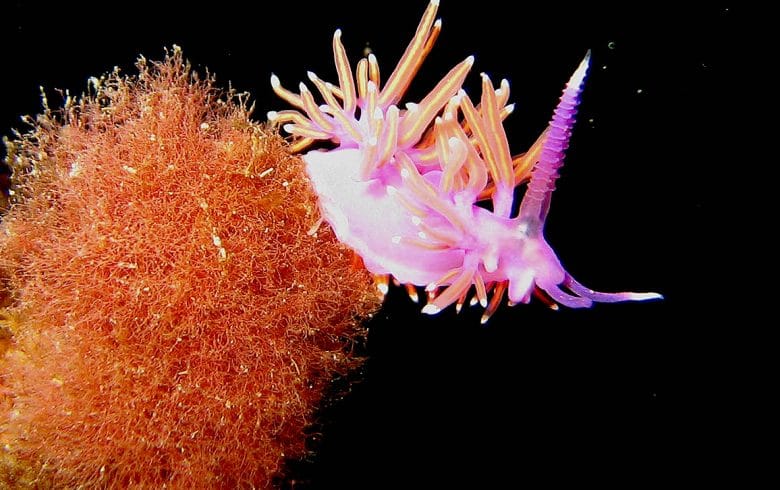
The pink flabellina is one of the prettiest nudibranches in the Mediterranean. At just 3 to 5cm long, it has a slim, elongated body with a tail and is covered with small outgrowths called cerata that help it breathe. The two tentacles on its head are shaped like antelope horns and are called rhinophores, which are sensory organs it uses to smell. It also has two long tactile tentacles at the front of its head and two very short tentacles around the mouth. It lives between 5 and 50m below the surface on rocky bottoms covered in hydroids, its source of food. It is found all over the Mediterranean and in the eastern Atlantic. Like most nudibranches, it is a hermaphrodite species.
Phylum: Mollusca
Class: Gasteropoda
Order: Nudibranchia
Family: Flabellinidae
Scientific name: Flabellina affinis
French: Flabelline mauve
Spanish: Flabellina rosada
Italian: Flabellina lilla
German: Rosa Flabellina






















